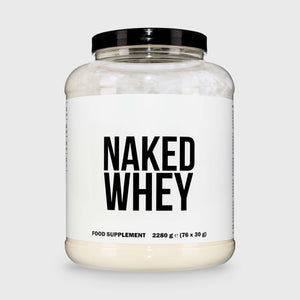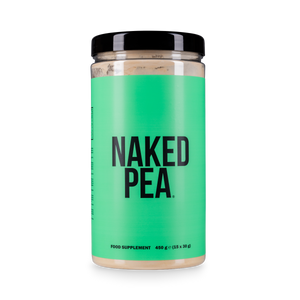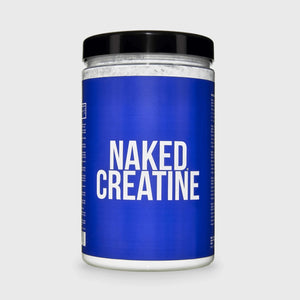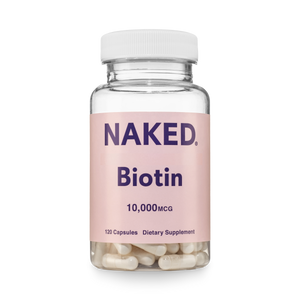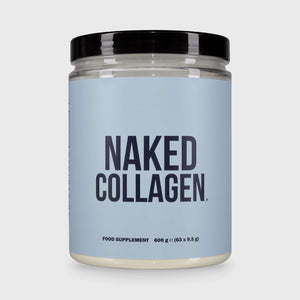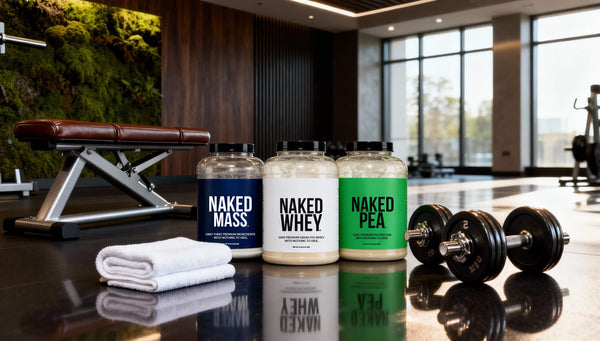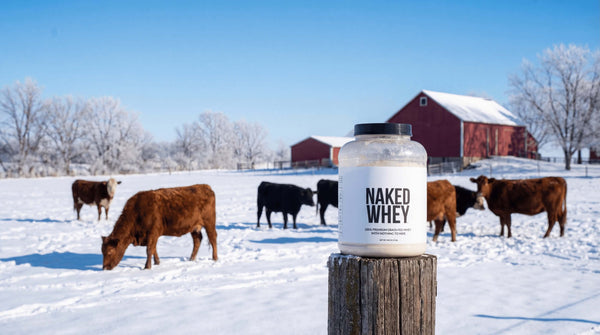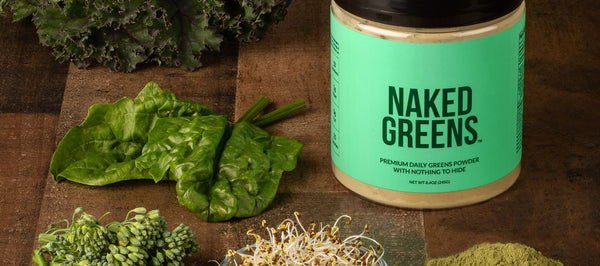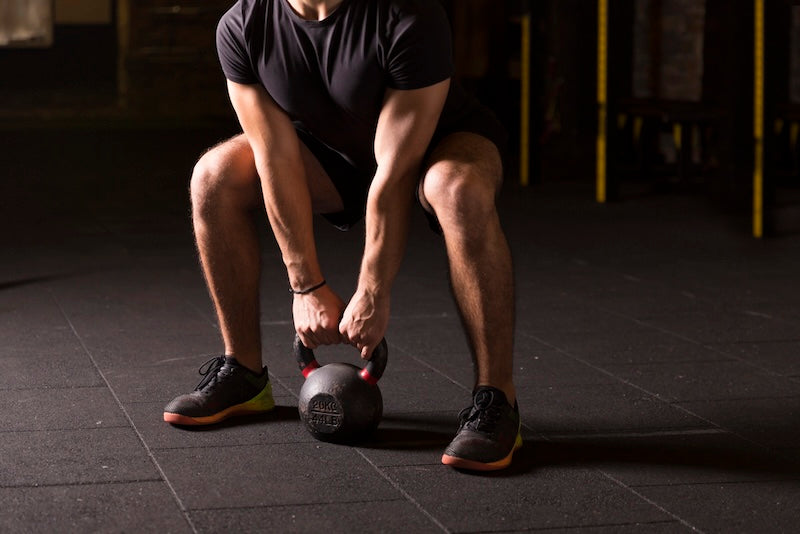Noticing more breakouts since starting your protein supplements? You're not alone.
Whey protein, while excellent for muscle building, can trigger acne in some people due to its effects on hormone levels and insulin response. This frustrating side effect doesn't mean you have to sacrifice your fitness goals for clear skin.
Fortunately, you can enjoy the benefits of whey protein without the unwanted pimples. With some strategic adjustments to your supplement routine, diet choices, and skincare regimen, you'll be able to maintain your gains while keeping your complexion clear.
The key lies in understanding exactly how whey affects your skin and implementing targeted prevention methods.
**Disclaimer:This information is for educational purposes only and is not a substitute for professional medical advice. Always consult a qualified healthcare provider about persistent acne or before changing your diet or supplement routine.
The Connection Between Whey Protein and Acne
Whey protein affects hormone production in ways that often trigger acne breakouts for many fitness enthusiasts.
When consumed, whey increases insulin-like growth factor 1 (IGF-1) levels in your body, a hormone that directly stimulates sebum production and encourages skin cell growth.
This excess sebum clogs pores and creates the perfect environment for acne-causing bacteria to thrive.
The dairy origin of whey protein compounds these effects. Dairy naturally contains hormones that interact with your endocrine system, potentially leading to hormonal imbalances.
These imbalances manifest as inflammatory responses on your skin, particularly along the jawline and chin – areas typically associated with hormonal acne.
A 2019 meta-analysis of observational studies found a positive relationship between dairy consumption, including total milk, whole milk, low-fat milk, and skim milk, and the occurrence of acne.
Recent research strongly supports this connection, with multiple studies finding a significant association between whey protein consumption and the development of acne vulgaris, particularly among adolescents and young adults (Cengiz et al., 2017; Simonart, 2012; Muhaidat et al., 2024; Timotius et al., 2023).
A 2024 case-control study found that a significantly higher proportion of acne-afflicted participants consumed whey protein compared to those without acne (Muhaidat et al., 2024).
Your body's insulin response to whey protein also plays a significant role in acne development. Whey has a high glycemic load that spikes insulin levels rapidly after consumption.
These insulin spikes trigger a cascade of inflammatory processes and increase androgen activity, making your skin more prone to breakouts within 24-48 hours after consuming whey supplements.
Your skin type and genetic predisposition determine how severely whey protein affects your complexion.
People with naturally oily skin or a family history of acne typically experience more pronounced breakouts when consuming whey supplements compared to those with drier skin types or no genetic predisposition to acne.
How Whey Protein Triggers Acne Breakouts

Whey protein's relationship with acne stems from specific biological mechanisms that affect your skin. Understanding these processes helps you make informed decisions about your supplement use while maintaining clear skin.
The Science Behind Protein-Induced Acne
Whey protein triggers acne through biochemical pathways that directly impact your skin health. When
consumed, whey protein increases insulin levels in your bloodstream, leading to excessive sebum production—the oily substance that naturally moisturizes your skin. This overproduction clogs pores and creates an environment where acne-causing bacteria thrive.
The insulin spike from whey consumption also accelerates skin cell turnover, causing dead cells to accumulate faster and block follicles, resulting in inflammatory responses that appear as red, painful pimples.
Research has identified that whey protein, derived from milk, enhances insulin/insulin-like growth factor 1 signaling, which is known to aggravate acne (Simonart, 2012; Zalewa et al., 2024).
This mechanism is supported by the observation that milk and dairy products can trigger acneiform lesions in susceptible individuals (Cengiz et al., 2017).
Hormonal Responses to Whey Consumption

Your endocrine system reacts strongly to whey protein intake, creating hormonal shifts that affect your skin.
Whey significantly elevates insulin-like growth factor 1 (IGF-1), a hormone that stimulates oil production and encourages rapid skin cell multiplication. These combined effects contribute to pore clogging and subsequent breakouts.
Additionally, as a dairy byproduct, whey contains inherent hormones and growth factors that can disrupt your hormonal balance.
These dairy-related compounds particularly impact individuals with genetic predispositions to acne or naturally oily skin, explaining why some people experience more severe reactions than others after whey supplementation.
However, this may not always be the case. A small study conducted in the city of João Pessoa in 2013 examined 30 participants who consumed whey protein supplements for two months.
This study demonstrated the onset of acne with the progressive use of whey supplementation, which was more predominant in females and those without current acne or family history.
Choose Acne-Friendly Protein Alternatives

Switching to acne-friendly protein alternatives offers a practical solution for those experiencing breakouts from whey protein while still supporting muscle growth and recovery.
These alternatives provide comparable nutritional benefits without triggering the hormonal cascades that lead to acne formation.
Plant-Based Protein Options
Plant-based proteins deliver excellent amino acid profiles without the acne-triggering hormones found in dairy-based options.
Multiple studies recommend non-dairy protein supplements as alternatives that may not have the same acne-promoting effects as whey protein (Baldwin & Tan, 2020; Muhaidat et al., 2024). Several effective alternatives include:
Pea Protein: Rich in branched-chain amino acids (BCAAs) and easily digested, making it gentle for acne-prone skin while still supporting muscle growth.
Hemp Protein: Contains anti-inflammatory omega-3 fatty acids that help reduce acne-related redness and swelling while providing complete protein nutrition.
Soy Protein: Offers a complete amino acid profile similar to whey but without the dairy components that disrupt hormone balance and trigger breakouts.
Brown Rice Protein: Provides a comprehensive amino acid profile that's gentle on skin and digestive systems while effectively supporting muscle recovery.
Hydrolyzed Whey and Other Modified Products

Modified whey products undergo additional processing that can reduce their acne-triggering potential while preserving muscle-building benefits:
Hydrolyzed Whey: Pre-digested through enzymatic processes, making it faster to absorb and potentially less likely to cause inflammatory responses that lead to acne.
Whey Isolate: Contains minimal lactose and milk fats compared to whey concentrate, decreasing the dairy compounds that commonly trigger acne flare-ups.
Casein Protein: Digests more slowly than whey and may cause fewer insulin spikes, potentially reducing the hormonal fluctuations that contribute to acne formation.
Collagen Protein: Derived from animal tissues rather than milk, providing skin-supporting amino acids without the acne-triggering effects of dairy proteins.
Dietary Adjustments to Prevent Whey-Related Breakouts

Making strategic dietary changes can significantly reduce acne flare-ups associated with whey protein consumption. These nutritional modifications work alongside reduced or alternative protein intake to maintain your fitness goals while preserving skin health.
Reduce Whey Protein Intake
Cutting back on whey protein often yields noticeable improvements in skin condition. Multiple studies have shown a significant relationship between high whey protein consumption and the incidence of acne vulgaris (Muhaidat et al., 2024; Timotius et al., 2023; Silverberg, 2012).
If you're experiencing persistent breakouts after protein shakes, start by halving your current dosage to observe any changes in your skin's response.
Complete elimination proves necessary for many individuals, with substantial improvements often occurring within the first few weeks of discontinuation.
High-quality whey isolates contain less lactose than concentrates, making them a better option if you're not ready to eliminate whey entirely.
Pay attention to any changes in your skin condition after starting whey protein supplements, as this self-monitoring approach is supported by research (Silverberg, 2012; Simonart, 2012).
Choose Alternative Protein Sources
Plant-based and egg-derived proteins offer excellent muscle-building benefits without the acne-triggering hormones found in dairy products.
Research specifically recommends non-dairy protein supplements as alternatives that may not have the same acne-promoting effects as whey protein (Baldwin & Tan, 2020; Muhaidat et al., 2024). Effective alternatives include:
Pea protein: Contains all nine essential amino acids with a complete BCAA profile.
“As I Registered Dietitian Nutritionist, I often recommend clients who have negative reactions to whey consider pea protein as an alternative, as it provides the same benefits in muscle growth and strength as whey in a plant-based form.”
Egg white protein: Highly bioavailable with minimal digestive issues.
Brown rice protein: Gentle on the digestive system and hypoallergenic.
Soy protein: Provides comparable muscle-building results to whey
These options maintain your protein intake requirements while eliminating the IGF-1 and hormone fluctuations associated with whey-induced breakouts.
Adopt a Low-Glycemic Diet
Research strongly supports incorporating a diet with a low glycemic load, which has been shown to reduce acne lesions (Baldwin & Tan, 2020).
According to a 12-week randomized-controlled trial on male acne patients aged 15-25 years old, a low-glycemic load diet improved insulin sensitivity and symptoms of acne vulgaris by reducing total lesions.
Focus on foods that don't cause rapid spikes in blood sugar levels, as these spikes can exacerbate the hormonal cascades that trigger acne. Low glycemic foods include:
-
Whole grains instead of refined carbohydrates
-
Legumes and pulses
-
Most fruits and non-starchy vegetables
-
Nuts and seeds
This approach works synergistically with your protein choices to maintain stable insulin levels and reduce acne formation.
Foods That Combat Acne While Using Whey

Incorporating specific anti-inflammatory foods helps counteract whey protein's acne-triggering effects.
Research specifically recommends increasing the intake of omega-3 and omega-6 fatty acids through fish and healthy oils, which may benefit skin health (Baldwin & Tan, 2020).
Omega-3-rich foods like fatty fish, flaxseeds, and walnuts reduce inflammation and regulate hormone production.
Zinc-containing foods (pumpkin seeds, chickpeas) support skin healing, while antioxidant-rich berries and leafy greens neutralize free radicals that contribute to inflammatory acne.
Probiotic foods such as yogurt, kefir, and fermented vegetables improve gut health, which directly influences skin condition through the gut-skin axis.
What to Avoid When Taking Protein Supplements
Certain dietary elements amplify whey protein's acne-promoting effects and should be minimized.
High-glycemic foods (white bread, sugary snacks) cause insulin spikes that worsen acne when combined with whey protein.
Additionally, dairy products compound the hormonal impact of whey, particularly in acne-prone individuals.
Processed foods containing artificial additives and preservatives trigger inflammatory responses in sensitive skin types.
Alcohol dehydrates skin and compromises liver function needed for hormone regulation, while excessive iodine from certain protein supplements and processed foods can exacerbate existing acne conditions.
Skincare Routines for Whey Protein Users

Maintaining a consistent skincare routine is essential for whey protein users to minimize acne outbreaks. The right skincare practices can help counteract the sebum-producing effects of whey protein and keep your skin clear despite supplementation.
Morning and Evening Skincare Regimens
For the morning routine, start with a gentle cleanser containing salicylic acid or benzoyl peroxide to remove excess oil without irritating your skin.
Apply a lightweight, oil-free moisturizer that provides hydration without clogging pores. Finish with a broad-spectrum SPF 30+ sunscreen to protect your skin from UV damage, which can worsen acne inflammation.
Your evening routine should be more intensive. Begin with a double cleanse—first using an oil-based cleanser to remove sunscreen and environmental pollutants, followed by a water-based cleanser.
Apply active ingredients like retinoids, niacinamide, or azelaic acid to help regulate cell turnover and reduce inflammation caused by whey-induced hormonal changes.
Complete your routine with a slightly richer (but still non-comedogenic) moisturizer to support skin barrier repair overnight.
Recommended Products for Acne-Prone Skin
For cleansers, look for products containing 2% salicylic acid or 2.5-5% benzoyl peroxide. These ingredients effectively penetrate oil-clogged pores and reduce acne-causing bacteria.
CeraVe Acne Foaming Cream Cleanser and Paula's Choice 2% BHA Liquid Exfoliant are excellent options for whey protein users.
When choosing treatments, products with 0.025-0.1% retinoids help regulate cell turnover, while 10% niacinamide reduces inflammation and balances oil production.
The Ordinary Niacinamide 10% + Zinc 1% specifically addresses increased sebum production triggered by whey protein.
For moisturizers, select gel-based formulas containing hyaluronic acid, glycerin, and ceramides that hydrate without adding oil.
Neutrogena Hydro Boost Water Gel and La Roche-Posay Effaclar Mat Oil-Free Mattifying Moisturizer provide hydration while controlling shine throughout the day.
Incorporate spot treatments containing 2-5% benzoyl peroxide or sulfur for targeting individual breakouts caused by whey-induced hormonal fluctuations. These can be applied directly to emerging blemishes to reduce their severity and duration.
Workout and Supplement Timing Strategies

Pre and Post-Workout Timing
Timing your whey protein consumption strategically minimizes its acne-triggering potential.
Taking whey immediately after workouts, when your body's insulin sensitivity is at its peak, reduces the dramatic insulin spikes that lead to breakouts.
Post-workout consumption allows your body to utilize the protein more efficiently for muscle repair, directing resources toward recovery rather than sebum production.
Morning consumption may also be beneficial as your metabolism is naturally more active early in the day.
Cycling Your Supplement Use
Implementing a protein cycling strategy helps prevent continuous hormonal disruption that contributes to acne. Alternate between whey protein and plant-based alternatives on different days to reduce cumulative exposure to acne-triggering compounds.
Consider using whey only on intense training days when your muscles need maximum recovery support, switching to non-dairy options on rest days or after lighter workouts.
This approach maintains muscle-building benefits while giving your skin periodic breaks from whey's hormonal effects.
Hydration and Clearance Support
Increasing your water intake when using whey protein accelerates the clearance of acne-triggering compounds from your system.
Aim for at least 3-4 liters of water daily when consuming whey supplements to support kidney function and toxin elimination. Proper hydration also improves overall skin health by maintaining cellular turnover and preventing the accumulation of dead skin cells that can clog pores.
Enhanced hydration works synergistically with moderate whey consumption to minimize its potential impact on your skin.
When to Consult a Dermatologist

Persistent acne despite modifications to your whey protein regimen warrants professional evaluation.
Dermatologists offer specialized expertise in diagnosing the specific relationship between your supplement use and skin condition, providing tailored solutions beyond general recommendations.
Severe or Cystic Breakouts
Whey protein occasionally triggers severe cystic acne characterized by painful, deep nodules that don't respond to over-the-counter treatments.
These inflammatory lesions indicate a significant hormonal response to whey's IGF-1 stimulation and require medical intervention to prevent scarring. Dermatologists can prescribe oral antibiotics, isotretinoin, or hormonal therapies specifically targeting this severe reaction.
Case reports have documented moderate to severe acne flares in teenage athletes using whey protein supplements (Silverberg, 2012), highlighting the need for professional care in these cases.
Acne That Persists After Elimination
If you've eliminated whey protein for 4-6 weeks and still experience persistent breakouts, your acne likely has multiple contributing factors.
Research indicates that while many individuals see improvement after whey elimination, others may have underlying hormonal imbalances or genetic predispositions requiring professional assessment.
A dermatologist can conduct hormone panels and develop a comprehensive treatment approach.
The research emphasizes that if acne persists despite dietary changes, consulting a dermatologist can provide personalized advice and treatment options (Baldwin & Tan, 2020).
Scarring and Hyperpigmentation
Post-inflammatory hyperpigmentation and scarring from whey-induced breakouts demand professional care.
Dermatologists offer effective treatments, including chemical peels, microdermabrasion, and laser therapy that address existing damage while preventing further complications.
Early intervention by a specialist significantly reduces permanent texture changes and discoloration.
Confusing Skin Reactions
When your skin exhibits multiple reactions simultaneously—such as acne combined with redness, itching, or rash—you're possibly experiencing both acne and an allergic response to whey protein.
Dermatologists can differentiate between various skin conditions and recommend appropriate therapies for complex presentations that self-diagnosis might misinterpret.
Conclusion
Managing acne while using whey protein isn't about abandoning your fitness goals. You can have clear skin and still meet your protein needs with strategic adjustments to your supplement routine and diet.
Recent research strongly confirms the link between whey protein and acne (Muhaidat et al., 2024; Timotius et al., 2023; Simonart, 2012), but offers practical solutions.
Try plant-based alternatives like pea or hemp protein, as research specifically recommends (Baldwin & Tan, 2020; Muhaidat et al., 2024), or opt for whey isolate if you're not ready to eliminate whey.
Consider adopting a low glycemic diet, which research shows can reduce acne lesions (Baldwin & Tan, 2020), and increase your intake of omega-3 and omega-6 fatty acids through fish and healthy oils for better skin health.
Pair these changes with a consistent skincare routine using non-comedogenic products.
Remember that everyone's skin responds differently. What works for others might not work for you. If your acne persists despite these modifications, don't hesitate to consult a dermatologist for personalized advice.
Your fitness journey doesn't have to come at the expense of your skin health. With the right approach, you can build muscle and maintain clear, radiant skin.
Frequently Asked Questions

Does whey protein actually cause acne?
Yes, whey protein can trigger acne in susceptible individuals.
Multiple studies have found a positive association between whey protein consumption and an increased risk of developing acne, particularly among adolescents and young adults (Muhaidat et al., 2024; Timotius et al., 2023; Silverberg, 2012).
It increases insulin-like growth factor 1 (IGF-1) levels, which stimulates sebum production and skin cell growth. The dairy origin of whey contains hormones that can disrupt the endocrine system, causing inflammatory responses on the skin.
Research has documented the onset of acne following whey protein supplementation, particularly among bodybuilders and athletes (Simonart, 2012; Silverberg, 2012).
How quickly can whey protein cause breakouts?
Whey protein can trigger acne breakouts within 24-48 hours after consumption. Its high glycemic load causes rapid insulin spikes, triggering inflammatory processes and increasing androgen activity.
These biological responses make the skin more prone to breakouts, particularly in individuals with genetic predispositions to acne or naturally oily skin.
What are some acne-friendly protein alternatives?
Research recommends non-dairy protein supplements as alternatives that may not have the same acne-promoting effects as whey protein (Baldwin & Tan, 2020; Muhaidat et al., 2024).
Plant-based protein options like pea, hemp, soy, and brown rice protein offer excellent amino acid profiles without acne-triggering hormones.
Other alternatives include hydrolyzed whey, whey isolate, casein protein, and collagen protein, which may reduce acne potential while preserving muscle-building benefits. Egg white protein is another excellent option that provides complete amino acids without dairy compounds.
Can I still use whey protein if I'm prone to acne?
Yes, but with modifications. Consider switching to high-quality whey isolates with less lactose, reducing your intake frequency, and using smaller serving sizes.
Research suggests monitoring skin changes after starting whey protein supplements and potentially reducing or discontinuing use if acne develops (Silverberg, 2012; Simonart, 2012).
Pair whey consumption with anti-inflammatory foods and maintain a consistent skincare routine with acne-fighting ingredients. If breakouts persist, consider transitioning to plant-based protein alternatives completely, as recommended by research (Baldwin & Tan, 2020).
How does whey protein affect hormone levels?
Whey protein increases insulin levels and insulin-like growth factor 1 (IGF-1), which triggers excessive sebum production.
Research identifies that whey protein enhances insulin/insulin-like growth factor 1 signaling, which is known to aggravate acne (Simonart, 2012; Zalewa et al., 2024).
It also contains dairy hormones that can disrupt your endocrine system, creating hormonal shifts that exacerbate skin issues. These changes accelerate skin cell turnover, causing dead cells to accumulate and block follicles, resulting in inflammatory responses.
When should I see a dermatologist about whey-related acne?
Consult a dermatologist if you experience severe cystic breakouts, if acne persists after eliminating whey for 4-6 weeks, or if you're developing scarring or hyperpigmentation from breakouts.
Research emphasizes that if acne persists despite dietary changes, consulting a dermatologist can provide personalized advice and treatment options (Baldwin & Tan, 2020).
Sometimes skin reactions to whey may involve both acne and allergic responses, which require professional evaluation for appropriate treatment.
How long after quitting whey protein will my skin clear up?
Most people notice improvement within 2-4 weeks after eliminating whey protein from their diet. Individual results vary based on factors like hormonal balance, genetics, overall diet, and skincare routine.
Case reports have shown that improvement can be seen after discontinuing whey protein supplements (Simonart, 2012; Silverberg, 2012), with the timeframe varying based on individual factors.
Can I prevent whey-induced acne with a good skincare routine?
A targeted skincare routine can help manage but may not completely prevent whey-induced acne. Use non-comedogenic cleansers containing salicylic acid or benzoyl peroxide, oil-free moisturizers, and exfoliate regularly to prevent pore blockage.
Remember that addressing the root cause (whey consumption) alongside skincare will yield the best results, as research consistently shows the link between whey protein and acne development (Muhaidat et al., 2024; Timotius et al., 2023; Cengiz et al., 2017).
References
Baldwin, H., & Tan, J. (2020). Effects of Diet on Acne and Its Response to Treatment. American Journal of Clinical Dermatology, 22, 55-65. https://doi.org/10.1007/s40257-020-00542-y
Cengiz, F., Cemil, B., Emiroglu, N., Bahalı, A., & Onsun, N. (2017). Acne located on the trunk, whey protein supplementation: Is there any association?. Health Promotion Perspectives, 7, 106-108. https://doi.org/10.15171/hpp.2017.19
Muhaidat, J., Qablan, A., Gharaibeh, F., Albataineh, G., Abdo, N., Alshiyab, D., & Al-Qarqaz, F. (2024). The Effect of Whey Protein Supplements on Acne Vulgaris among Male Adolescents and Young Adults: A Case-Control Study from North of Jordan. Dermatology Research and Practice, 2024. https://doi.org/10.1155/2024/2158229
Silverberg, N. (2012). Whey protein precipitated moderate to severe acne flares in 5 teenage athletes. Cutis, 90(2), 70-72.
Simonart, T. (2012). Acne and Whey Protein Supplementation among Bodybuilders. Dermatology, 225, 256-258. https://doi.org/10.1159/000345102
Timotius, T., Kamalo, A., Eunike, D., Titanic, P., Priyanto, T., & Çelik, S. (2023). The Relationship Between Protein Whey Milk Consumption and The Occurrence of Acne Vulgaris in Adolescents Aged 18-21 Years. Jurnal Kesehatan. https://doi.org/10.26630/jk.v14i2.4018
Zalewa, K., Olszak, J., Kapłan, W., Orłowska, D., & Bartoszek, L. (2024). Drugs and other substances aggravate acne vulgaris. Journal of Education, Health and Sport. https://doi.org/10.12775/jehs.2024.70.55774
